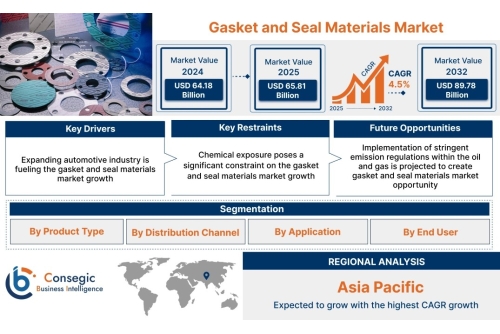Bharat Book Bureau Provides the Trending Market Research Report on “Vietnam Home Appliance Market 2022 by Manufacturers, Regions, Type and Application, Forecast to 2031” under Consumer Goods Market Research Reports Category. The report offers a collection of superior market research, market analysis, competitive intelligence and Market reports.
Vietnam has a young population structure, abundant labor force and low cost, which provides favorable conditions for the development of Home Appliance Market and attracts many foreign home appliance companies to settle in Vietnam, such as Midea, Haier, Toshiba, Panasonic, Sharp, Gree, Nepal, Samsung, LG, AQUA and other home appliance companies have invested and built factories in Vietnam.
In terms of economic growth, Vietnam's economy has maintained rapid growth for many years since the 1986 reform. 2020 Vietnam's GDP grew by 2.91%. 2021 Vietnam's GDP rose to 362.619 billion USD, a real growth of 2.58%. Despite the decline in growth rate due to the New Crown Pneumonia epidemic, it is still one of the countries in the world that have achieved positive economic growth. Foreign investment is also increasingly favorable to Vietnam. The processing and manufacturing industry has become the most attractive area for foreign investment. This indicates that foreign investors have placed high trust in Vietnam in the global supply chain. 2021 yearly Vietnam attracted a total of $30 billion in foreign investment, up 2% year-on-year.
According to Bharat Book Bureau's analysis, with the rapid growth of Vietnam's economy, the demand for home appliances in Vietnam's domestic market has also increased. Vietnam has a low penetration rate of domestic home appliances. Since the opening up of the country, its national economy has developed rapidly and the per capita income level has been increasing, making it one of the world's most promising home appliance consumer markets. Vietnam residents have a strong consumer consciousness. In addition to daily necessities, the products that ordinary residents spend more on are mainly motorcycles, home appliances and consumer electronics.
Currently, Vietnam's major advantage in attracting foreign investment is the demographic dividend and population cost. The median age of Vietnam's population is about 30 years old, and the population under 35 years old accounts for about 55.6% of the total population. According to Bharat Book Bureau's analysis, the current minimum wage level in Vietnam is lower than Thailand and Indonesia, and is at a lower level among Southeast Asian countries. Apart from labor costs, Vietnam is one of the lowest countries in its neighborhood in terms of cost of doing business, second only to Cambodia and Myanmar.
At the same time, Vietnam actively pursues an all-round diplomatic course, developing friendly cooperation with ASEAN countries, while establishing ties with large economies such as China, the US, Russia, Japan and the EU, as well as the World Bank and the Asian Development Bank, and participating in multilateral trade. With the entry into force of the Regional Comprehensive Economic Partnership (RCEP), investments in Vietnam from South Korea, Japan and Singapore have maintained a relatively rapid growth.
Vietnam has signed several new free trade agreements, especially the Vietnam-EU Free Trade Agreement (EVFTA) and the Comprehensive and Progressive Trans-Pacific Partnership (CPTPP). So far, Vietnam has maintained economic and trade relations with 220 countries and regions and signed more than 80 double taxation avoidance agreements with foreign countries, which helps Vietnam integrate into the global economy, improve the business environment and effectively attract Foreign direct investment.
To increase the attractiveness of foreign investment, the Vietnamese government has introduced a series of tax incentives, including but not limited to preferential taxes for domestic companies, such as lower corporate income tax rates, exemption or reduction of import taxes on fixed assets and raw materials, exemption or reduction of land taxes, etc. According to CRI, Vietnam's home appliance market is expected to continue to grow from 2022-2031. On the one hand, the export volume of Vietnamese home appliances will continue to rise. Meanwhile, with the development of economy and population growth, the demand for home appliances in Vietnam's domestic market is also on the rise.
Topics covered:
Overview of Vietnam's Home appliance Industry
Economic and Policy Environment of Vietnam’s Home appliance Industry
What is the impact of COVID-19 on the home appliance industry in Vietnam?
Vietnam’s Home appliance Market Size, 2016-2021
Import and Export Analysis of Home appliance in Vietnam
Analysis of Vietnam's Major Home appliance Plantation and Processing Enterprises
Key Drivers and Market Opportunities in Vietnam’s Home appliance Industry
What are the key drivers, challenges, and opportunities for Vietnam’s Home appliance industry?
during 2022-2031?
What is the expected revenue of Vietnam’s Home appliance market during 2022-2031?
Which segment of Vietnam’s Home appliance market is expected to dominate the market in 2031?
What are the major adverse factors facing the home appliance industry in Vietnam?
Forecast on Vietnam’s Home appliance Market, 2022-2031
Browse our full report with Table of Content :
https://www.bharatbook.com/report/1363095/research-report-on-vietnam-home-appliance-industry
About Bharat Book Bureau:
Bharat Book is Your One-Stop-Shop with an exhaustive coverage of 4,80,000 reports and insights that includes latest Market Study, Market Trends & Analysis, Forecasts Customized Intelligence, Newsletters and Online Databases. Overall a comprehensive coverage of major industries with a further segmentation of 100+ subsectors.
Contact us at:
Bharat Book Bureau
Tel: +91 22 27810772 / 27810773
Email: [email protected]
Website: www.bharatbook.com












